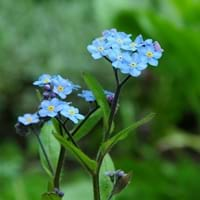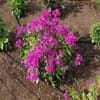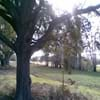Life Span
Annual and Perennial
Perennial
Type
Flowering Plants, Shrubs
Needled or Scaled Evergreen
Origin
Eastern Asia
Northern Europe, Russia/Siberia, Western Asia
Types
Bigleaf hydrangea, Hortensia, Smooth hydrangea, Oakleaf hydrangea, Annabelle
Waterer Scotch Pine
Habitat
Fields, gardens, meadows, rocky outcrops, waste ground, yards
Mediterranean region, Rock outcrops, Woodlands
USDA Hardiness Zone
Not Available
3-7
Sunset Zone
21,22
A1, A2, A3, 1a, 1b, 2a, 2b, 3a, 3b, 4, 5, 6, 7, 8, 9, 14, 15, 16, 17, 18, 19, 20, 21
Habit
Clump-Forming
Pyramidal
Flower Color
Blue, White
Purple, Red, Tan
Flower Color Modifier
Bicolor
Bicolor
Fruit Color
Not Available
Greyish Brown
Leaf Color in Spring
Green, Gray Green
Green, Blue Green
Leaf Color in Summer
Green, Gray Green
Green, Blue Green
Leaf Color in Fall
Green, Gray Green
Green, Blue Green
Leaf Color in Winter
Light Green
Green, Blue Green, Yellow green
Leaf Shape
Lanceolate
Needle like
Plant Season
Spring, Summer
Spring, Summer, Fall, Winter
Sunlight
Full Sun, Partial Sun
Full Sun
Type of Soil
Loam
Loam, Sand
The pH of Soil
Acidic, Neutral
Acidic, Neutral
Soil Drainage
Well drained
Average
Bloom Time
Early Spring, Spring, Late Spring, Early Summer, Summer, Late Summer
Early Spring, Late Spring, Mid Spring
Tolerances
Not Available
Drought
Where to Plant?
Ground
Ground
How to Plant?
Divison, Seedlings
Cuttings, Seedlings
Plant Maintenance
Medium
Medium
Watering Requirements
Do Not over Water
Do Not over Water, Keep ground moist, Keep the Soil well drained, Medium
In Summer
Lots of watering
Lots of watering
In Spring
Moderate
Moderate
In Winter
Average Water
Average Water
Soil pH
Acidic, Neutral
Acidic, Neutral
Soil Type
Loam
Loam, Sand
Soil Drainage Capacity
Well drained
Average
Sun Exposure
Full Sun, Partial Sun
Full Sun
Pruning
Remove damaged leaves, Remove dead branches, Remove dead leaves
Prune once the plant is tall enough, Prune to stimulate growth
Fertilizers
All-Purpose Liquid Fertilizer
All-Purpose Liquid Fertilizer
Pests and Diseases
Red blotch
Adelgids, Bark beetles, Blister Rust, Canker, Sawfly Larvae, Spruce spider mite, White pine weevil
Plant Tolerance
Drought
Drought
Flower Petal Number
Single
Single
Foliage Texture
Medium
Medium
Foliage Sheen
Matte
Not Available
Attracts
Bees, Flies
Birds, Butterflies, Flying insects, Insects
Allergy
Chest tightness, Diarrhea, Dizziness, Nausea, Vomiting
Eye irritation, Itchiness, Skin irritation, sneezing
Aesthetic Uses
Beautification, Cottage Garden, Ground Cover, Showy Purposes
Beautification, Decorating walls, Ground Cover, Landscape Designing, Mixed Border, Showy Purposes, Used for decorating walls, fences, gates, hedges, etc., Used for making hedges
Beauty Benefits
Not Available
Promotes healthy skin, Skin Problems
Environmental Uses
Air purification
Air purification, Food for animals, Food for birds, Prevent Soil Erosion, Shelter for wildlife, soil stabilisation
Medicinal Uses
Fever, Kidney problems, Urinary tract problems
Antibiotic, Bronchitis, Wounds
Part of Plant Used
Flowers, Root
Flowering Tips, Leaves, Seeds
Other Uses
Culinary use, Used as Ornamental plant
Application in Furniture, Condiment, Food for animals, Paper pulp, Showy Purposes, Used as Christmas Tree, Used as Ornamental plant, Used for its medicinal properties, Used for Landscaping
Used As Indoor Plant
No
No
Used As Outdoor Plant
Yes
Yes
Garden Design
Bedding Plant, Cottage garden, Edible, Hanging Basket, Wildflower
Feature Plant, Screening, Wind Break, Shade Trees
Botanical Name
Myosotis arvensis
PINUS sylvestris
Common Name
Forget-Me-Not
Scotch pine, Scot pine
In Hindi
Forget-Me-Not
स्कॉच पाइन
In German
Forget-Me-Not
Waldkiefer
In French
Forget-Me-Not
Pin sylvestre
In Spanish
Arce japonés
Pinus sylvestris
In Greek
Forget-Me-Not
Σκωτσέζοι πεύκο
In Portuguese
Forget-Me-Not
Pinheiro-da-escócia
In Polish
Forget-Me-Not
Sosna zwyczajna
In Latin
Forget-Me-Not
Scott abiit
Phylum
Magnoliophyta
Coniferophyta
Class
Magnoliopsida
Pinopsida
Family
Boraginaceae
Pinaceae
Clade
Not Available
Not Available
Tribe
Not Available
Pineae
Subfamily
Not Available
Pinoideae
Importance of Field Forget Me Not and Scot Pine
Want to have the most appropriate plant for your garden? You might want to know the importance of Field Forget Me Not and Scot Pine. Basically, these two plants vary in many aspects. Compare Field Forget Me Not and Scot Pine as they differ in many characteristics such as their life, care, benefits, facts, etc. Every gardener must at least have the slightest clue about the plants he wants to plant in his garden. Compare their benefits, which differ in many ways like facts and uses. The medicinal use of Field Forget Me Not is Fever, Kidney problems and Urinary tract problems whereas of Scot Pine is Antibiotic, Bronchitis and Wounds. Field Forget Me Not has beauty benefits as follows: Not Available while Scot Pine has beauty benefits as follows: Not Available.
Compare Facts of Field Forget Me Not vs Scot Pine
How to choose the best garden plant for your garden depending upon its facts? Here garden plant comparison will help you to solve this query. Compare the facts of Field Forget Me Not vs Scot Pine and know which one to choose. As garden plants have benefits and other uses, allergy is also a major drawback of plants for some people. Allergic reactions of Field Forget Me Not are Chest tightness, Diarrhea, Dizziness, Nausea and Vomiting whereas of Scot Pine have Eye irritation, Itchiness, Skin irritation and sneezing respectively. Having a fruit bearing plant in your garden can be a plus point of your garden. Field Forget Me Not has no showy fruits and Scot Pine has showy fruits. Also Field Forget Me Not is not flowering and Scot Pine is flowering. You can compare Field Forget Me Not and Scot Pine facts and facts of other plants too.





